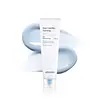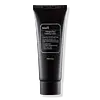What's inside
What's inside
 Key Ingredients
Key Ingredients

 Benefits
Benefits

 Concerns
Concerns

 Ingredients Side-by-side
Ingredients Side-by-side

Water
Skin ConditioningGlycerin
HumectantHydrogenated Polydecene
EmollientDipropylene Glycol
HumectantCaprylic/Capric Triglyceride
MaskingMethylpropanediol
SolventGlyceryl Stearate
EmollientPentaerythrityl Tetraethylhexanoate
EmollientVinyldimethicone
Niacinamide
SmoothingCetearyl Alcohol
EmollientHydrogenated Poly(C6-14 Olefin)
EmollientPolyglyceryl-10 Laurate
Skin ConditioningMethyl Trimethicone
Skin ConditioningDicaprylyl Ether
Emollient1,2-Hexanediol
Skin ConditioningSodium Stearoyl Glutamate
CleansingEthoxydiglycol
HumectantC10-18 Triglycerides
EmollientHydroxyethyl Acrylate/Sodium Acryloyldimethyl Taurate Copolymer
Emulsion StabilisingDimethicone/Vinyl Dimethicone Crosspolymer
Skin ConditioningHydroxyacetophenone
AntioxidantGlyceryl Stearates
EmollientJojoba Esters
EmollientAmmonium Acryloyldimethyltaurate/Vp Copolymer
Behenyl Alcohol
EmollientCetyl Alcohol
EmollientStearyl Alcohol
EmollientEthylhexylglycerin
Skin ConditioningXanthan Gum
EmulsifyingPanthenol
Skin ConditioningHelianthus Annuus Seed Wax
Skin ConditioningEclipta Prostrata Leaf Extract
Skin ConditioningLaminaria Japonica Extract
Skin ProtectingOctyldodecanol
EmollientAdenosine
Skin ConditioningAsiaticoside
AntioxidantDisodium EDTA
Hydrogenated Lecithin
EmulsifyingGlycolipids
Skin ConditioningMadecassic Acid
Skin ConditioningAsiatic Acid
Skin ConditioningSorbitan Isostearate
EmulsifyingPolyglyceryl-10 Myristate
Skin ConditioningButylene Glycol
HumectantC12-13 Alketh-9
EmulsifyingFructooligosaccharides
HumectantBeta-Glucan
Skin ConditioningPolyglycerin-3
HumectantMaltodextrin
AbsorbentHydrolyzed Gardenia Florida Extract
AntioxidantDextrin
AbsorbentTheobroma Cacao Seed Extract
AntioxidantHydrolyzed Hyaluronic Acid
HumectantCentella Asiatica Flower/Leaf/Stem Extract
Skin ConditioningCeramide NP
Skin ConditioningLecithin
EmollientTocopherol
AntioxidantAlcohol
AntimicrobialPolysorbate 20
EmulsifyingArginine
MaskingCarbomer
Emulsion StabilisingPhytosphingosine
Skin ConditioningGuaiazulene
AntimicrobialSodium Ascorbyl Phosphate
AntioxidantChamomilla Recutita Flower Oil
MaskingCentella Asiatica Extract
CleansingChamomilla Recutita Flower/Leaf Extract
AntimicrobialFolic Acid
Skin ConditioningSh-Oligopeptide-1
Skin ConditioningSh-Oligopeptide-2
Skin ConditioningSh-Polypeptide-1
Skin ConditioningSh-Polypeptide-11
Sh-Polypeptide-9
Skin ConditioningWater, Glycerin, Hydrogenated Polydecene, Dipropylene Glycol, Caprylic/Capric Triglyceride, Methylpropanediol, Glyceryl Stearate, Pentaerythrityl Tetraethylhexanoate, Vinyldimethicone, Niacinamide, Cetearyl Alcohol, Hydrogenated Poly(C6-14 Olefin), Polyglyceryl-10 Laurate, Methyl Trimethicone, Dicaprylyl Ether, 1,2-Hexanediol, Sodium Stearoyl Glutamate, Ethoxydiglycol, C10-18 Triglycerides, Hydroxyethyl Acrylate/Sodium Acryloyldimethyl Taurate Copolymer, Dimethicone/Vinyl Dimethicone Crosspolymer, Hydroxyacetophenone, Glyceryl Stearates, Jojoba Esters, Ammonium Acryloyldimethyltaurate/Vp Copolymer, Behenyl Alcohol, Cetyl Alcohol, Stearyl Alcohol, Ethylhexylglycerin, Xanthan Gum, Panthenol, Helianthus Annuus Seed Wax, Eclipta Prostrata Leaf Extract, Laminaria Japonica Extract, Octyldodecanol, Adenosine, Asiaticoside, Disodium EDTA, Hydrogenated Lecithin, Glycolipids, Madecassic Acid, Asiatic Acid, Sorbitan Isostearate, Polyglyceryl-10 Myristate, Butylene Glycol, C12-13 Alketh-9, Fructooligosaccharides, Beta-Glucan, Polyglycerin-3, Maltodextrin, Hydrolyzed Gardenia Florida Extract, Dextrin, Theobroma Cacao Seed Extract, Hydrolyzed Hyaluronic Acid, Centella Asiatica Flower/Leaf/Stem Extract, Ceramide NP, Lecithin, Tocopherol, Alcohol, Polysorbate 20, Arginine, Carbomer, Phytosphingosine, Guaiazulene, Sodium Ascorbyl Phosphate, Chamomilla Recutita Flower Oil, Centella Asiatica Extract, Chamomilla Recutita Flower/Leaf Extract, Folic Acid, Sh-Oligopeptide-1, Sh-Oligopeptide-2, Sh-Polypeptide-1, Sh-Polypeptide-11, Sh-Polypeptide-9
Water
Skin ConditioningCetyl Ethylhexanoate
EmollientButylene Glycol
HumectantGlycerin
HumectantSodium Hyaluronate
HumectantCaprylic/Capric Triglyceride
MaskingCentella Asiatica Extract
CleansingSorbitan Stearate
EmulsifyingCetyl Alcohol
EmollientButyrospermum Parkii Butter
Skin ConditioningArgania Spinosa Kernel Oil
EmollientSimmondsia Chinensis Seed Oil
EmollientSorbitan Sesquioleate
EmulsifyingGlyceryl Stearate
EmollientStearic Acid
CleansingPortulaca Oleracea Extract
Skin ConditioningAnthemis Nobilis Flower Extract
MaskingCeramide NP
Skin ConditioningPolysorbate 60
EmulsifyingCandelilla Cera
EmollientChlorphenesin
AntimicrobialTocopheryl Acetate
AntioxidantXanthan Gum
EmulsifyingAcrylates/C10-30 Alkyl Acrylate Crosspolymer
Emulsion StabilisingMorus Alba Root Extract
BleachingTromethamine
BufferingBrassica Oleracea Italica Extract
AstringentGuaiazulene
AntimicrobialAcetyl Hexapeptide-8
HumectantLecithin
EmollientAcetyl Glutamine
Skin ConditioningSh-Oligopeptide-1
Skin ConditioningSh-Oligopeptide-2
Skin ConditioningSh-Polypeptide-1
Skin ConditioningSh-Polypeptide-9
Skin ConditioningSh-Polypeptide-11
Bacillus/Folic Acid/Soybean Ferment Extract
Skin ConditioningCaprylyl Glycol
Emollient1,2-Hexanediol
Skin ConditioningWater, Cetyl Ethylhexanoate, Butylene Glycol, Glycerin, Sodium Hyaluronate, Caprylic/Capric Triglyceride, Centella Asiatica Extract, Sorbitan Stearate, Cetyl Alcohol, Butyrospermum Parkii Butter, Argania Spinosa Kernel Oil, Simmondsia Chinensis Seed Oil, Sorbitan Sesquioleate, Glyceryl Stearate, Stearic Acid, Portulaca Oleracea Extract, Anthemis Nobilis Flower Extract, Ceramide NP, Polysorbate 60, Candelilla Cera, Chlorphenesin, Tocopheryl Acetate, Xanthan Gum, Acrylates/C10-30 Alkyl Acrylate Crosspolymer, Morus Alba Root Extract, Tromethamine, Brassica Oleracea Italica Extract, Guaiazulene, Acetyl Hexapeptide-8, Lecithin, Acetyl Glutamine, Sh-Oligopeptide-1, Sh-Oligopeptide-2, Sh-Polypeptide-1, Sh-Polypeptide-9, Sh-Polypeptide-11, Bacillus/Folic Acid/Soybean Ferment Extract, Caprylyl Glycol, 1,2-Hexanediol
 Reviews
Reviews

Ingredients Explained
These ingredients are found in both products.
Ingredients higher up in an ingredient list are typically present in a larger amount.
1,2-Hexanediol is a synthetic liquid and another multi-functional powerhouse.
It is a:
- Humectant, drawing moisture into the skin
- Emollient, helping to soften skin
- Solvent, dispersing and stabilizing formulas
- Preservative booster, enhancing the antimicrobial activity of other preservatives
Butylene Glycol (or BG) is used within cosmetic products for a few different reasons:
Overall, Butylene Glycol is a safe and well-rounded ingredient that works well with other ingredients.
Though this ingredient works well with most skin types, some people with sensitive skin may experience a reaction such as allergic rashes, closed comedones, or itchiness.
Learn more about Butylene GlycolThis ingredient is an emollient, solvent, and texture enhancer. It is considered a skin-softener by helping the skin prevent moisture loss.
It helps thicken a product's formula and makes it easier to spread by dissolving clumping compounds.
Caprylic Triglyceride is made by combining glycerin with coconut oil, forming a clear liquid.
While there is an assumption Caprylic Triglyceride can clog pores due to it being derived from coconut oil, there is no research supporting this.
Learn more about Caprylic/Capric TriglycerideCentella Asiatica Extract (Centella) is derived from an herb native to Southeast Asia. It is famous for its anti-inflammatory and soothing properties.
Centella is rich in antioxidants and amino acids, such as Madecassic Acid and Asiaticoside.
Studies show the compounds in centella help with:
The combination of all these properties makes centella effective at soothing, hydrating, and protecting the skin.
Other great components of centella include Vitamin A, vitamin C, several B vitamins, and Asiatic Acid.
Fun fact: Centella has been used as a medicine and in food for many centuries. As a medicine, it is used to treat burns, scratches, and wounds.
Learn more about Centella Asiatica ExtractCeramide NP is a type of ceramide and formally known as ceramide 3.
Ceramides are intercellular lipids naturally found in our skin that bonds dead skin cells together to create a barrier. They are known for their ability to hold water and thus are a great ingredient for dry skin.
Ceramides are an important building block for our skin barrier. A stronger barrier helps the skin look more firm and hydrated. By bolstering the skin ceramides act as a barrier against irritating ingredients. This can help with inflammation as well.
If you would like to eat ceramides, sweet potatoes contain a small amount.
Read more about other common types of ceramides here:
Ceramide AP
Ceramide EOP
Cetyl Alcohol is a fatty alcohol. Fatty Alcohols are most often used as an emollient or to thicken a product.
Its main roles are:
Though it has "alcohol" in the name, it is not related to denatured alcohol or ethyl alcohol.
The FDA allows products labeled "alcohol-free" to have fatty alcohols.
Learn more about Cetyl AlcoholGlycerin is already naturally found in your skin. It helps moisturize and protect your skin.
A study from 2016 found glycerin to be more effective as a humectant than AHAs and hyaluronic acid.
As a humectant, it helps the skin stay hydrated by pulling moisture to your skin. The low molecular weight of glycerin allows it to pull moisture into the deeper layers of your skin.
Hydrated skin improves your skin barrier; Your skin barrier helps protect against irritants and bacteria.
Glycerin has also been found to have antimicrobial and antiviral properties. Due to these properties, glycerin is often used in wound and burn treatments.
In cosmetics, glycerin is usually derived from plants such as soybean or palm. However, it can also be sourced from animals, such as tallow or animal fat.
This ingredient is organic, colorless, odorless, and non-toxic.
Glycerin is the name for this ingredient in American English. British English uses Glycerol/Glycerine.
Learn more about GlycerinGlyceryl Stearate is a mix of glycerin and stearic acid.
It is used to stabilize the mixing of water and oil ingredients. By preventing these ingredients from separating, it can help elongate shelf life. It can also help thicken the product's texture.
As an emollient, it helps soften skin and supports barrier-replenishing ingredients.
In cosmetics, Glyceryl Stearate is often made from vegetable oils or synthetically produced.
This ingredient may not be fungal-acne safe
Fun fact: The human body also creates Glyceryl Stearate naturally.
Learn more about Glyceryl StearateGuaiazulene is a fragrance.
Lecithin is a term for a group of substances found in the cell membranes of plants, animals, and humans. They are made up of mixture of phospholipids.
This ingredient has emollient and emulsifying properties.
As an emollient, lecithen helps soften the skin and creates a barrier to keep moisture in.
As an emulsifier, it also helps prevent water and oil ingredients from separating. Lecithin can also help ingredients be better absorbed by the skin.
This is because the phospholipids in lecithin produce liposomes. Liposomes help other ingredients get through the skin barrier.
Depending on the source of this ingredient, lecithin may not be fungal acne safe. This is because some sources of lecithin come from soybean oil, which may feed the malassezia yeast that feeds fungal acne.
We recommend reaching out to the brand you are purchasing from to inquire about the source of their lecithin.
Some other names for this ingredient include soy lecithin and deoiled soy lecithin.
Learn more about Lecithinsh-Oligopeptide-1 is a peptide found naturally in our bodies. Peptides are the building blocks for collagen and elastin in our skin.
In cosmetics, this ingredient is bioengineered to be identical to a human gene that codes for epidermal growth factor (EGF). EGF are signal molecules that simulate cell growth and healing.
Studies find EGF help with:
In South Korea and China, EGF is considered a controversial ingredient. The South Korean Ministry of Food and Drug Safety has cracked down on companies with products including EGF due to false advertisement claims.
According to Dr. Zoe Draelos, growth factors have some drawbacks:
There is also controversy surrounding growth factors. The controversy is due to their mitogenic activity, or their ability to increase the number of cells. It is best to avoid using growth factors if you have psoriasis or are at risk of skin cancer. However, it should be noted EGF are not mutagenic - meaning they will not cause cancer.
Learn more about Sh-Oligopeptide-1This peptide has similar properties to Sh-Oligopeptide-1.
In cosmetics, this ingredient is bioengineered to be identical to a human gene that codes for epidermal growth factor (EGF). EGF are signal molecules that simulate cell growth and healing.
There is also controversy surrounding EGF. The controversy is due to their mitogenic activity, or their ability to increase the number of cells. It is best to avoid using growth factors if you have psoriasis or are at risk of skin cancer. However, it should be noted EGF are not mutagenic - meaning they will not cause cancer.
Learn more about Sh-Oligopeptide-2Sh-Polypeptide-1 is a signal peptide that tells our cells to create more fibroblast cells. Fibroblasts maintain skin structure and plays a role in wound healing.
It is important to note this ingredient is mitogenic and not mutagenic. Meaning it will stimulate cell multiplication, and will not cause cancer.
Sh-Polypeptide-11 is a signal protein that tells our skin to create more fibroblast cells. Fibroblasts maintain skin structure and plays a role in wound healing.
It is important to note this ingredient is mitogenic and not mutagenic. Meaning it will stimulate cell multiplication, and will not cause cancer.
Sh-Polypeptide-9 is a signal peptide that tells our body to create more blood vessels.
It is important to note, this ingredient is mitogenic and not mutagenic. Meaning it will stimulate cell multiplication, and will not cause cancer.
Water. It's the most common cosmetic ingredient of all. You'll usually see it at the top of ingredient lists, meaning that it makes up the largest part of the product.
So why is it so popular? Water most often acts as a solvent - this means that it helps dissolve other ingredients into the formulation.
You'll also recognize water as that liquid we all need to stay alive. If you see this, drink a glass of water. Stay hydrated!
Learn more about WaterXanthan gum is used as a stabilizer and thickener within cosmetic products. It helps give products a sticky, thick feeling - preventing them from being too runny.
On the technical side of things, xanthan gum is a polysaccharide - a combination consisting of multiple sugar molecules bonded together.
Xanthan gum is a pretty common and great ingredient. It is a natural, non-toxic, non-irritating ingredient that is also commonly used in food products.
Learn more about Xanthan Gum